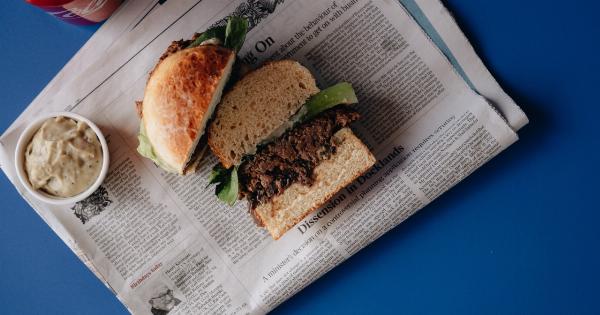Intermittent fasting (IF) has gained significant popularity in recent years, as it has been praised for its potential health benefits and effectiveness in weight management.
This eating pattern involves cycling between periods of fasting and eating, with various methods to choose from. If you’re considering trying intermittent fasting, it’s important to understand the different approaches and find the one that suits your lifestyle and goals.
In this article, we will explore several popular intermittent fasting methods and help you determine which one is right for you.
1. 16/8 Method (Leangains Protocol)
The 16/8 method is one of the most common and beginner-friendly approaches to intermittent fasting. With this method, you fast for 16 hours every day and limit your eating window to 8 hours.
Typically, this means skipping breakfast and only consuming meals between noon and 8 pm.
The 16/8 method is relatively easy to follow, especially if you already skip breakfast or have a late dinner. It allows your body to enter a fasted state, which may promote fat burning and improve insulin sensitivity.
2. 5:2 Diet
The 5:2 diet involves eating normally for five days of the week and restricting calorie intake to 500-600 calories for the remaining two days. These two fasting days are not required to be consecutive.
On fasting days, it’s important to choose nutrient-dense foods that provide essential vitamins and minerals while keeping the calorie count low.
This method is more flexible, as it doesn’t require daily fasting. It may be suitable for those who prefer a less restrictive approach and can manage calorie restriction on specific days.
3. Eat-Stop-Eat
Eat-Stop-Eat involves fasting for 24 hours once or twice a week. For example, you might have dinner one day and then not eat again until dinner the next day.
During the fasting period, you can consume zero-calorie beverages like water, black coffee, or herbal tea.
This method requires discipline and may be challenging for beginners. However, it offers the flexibility to choose fasting days according to your schedule and lifestyle.
4. Alternate-Day Fasting
As the name suggests, alternate-day fasting involves fasting every other day. On fasting days, you restrict calorie intake to 500-600 calories. On non-fasting days, you can eat normally.
It’s important to note that this method may not be suitable for everyone, especially those with certain medical conditions or a history of disordered eating.
Alternate-day fasting can be quite strict, so it’s crucial to ensure you’re getting adequate nutrition on both fasting and non-fasting days. Consulting with a healthcare professional is recommended if you choose this method.
5. Warrior Diet
The Warrior Diet follows a different approach compared to other intermittent fasting methods. It involves under-eating during the day and having one large, satisfying meal at night.
Throughout the day, small amounts of fruits and vegetables, as well as high-protein snacks, are allowed.
This method may be suitable for individuals who can easily go long hours without eating and prefer having a substantial meal in the evening.
However, it may not be ideal for individuals with specific dietary requirements or those who require consistent energy levels throughout the day.
6. OMAD (One Meal a Day)
OMAD is a more extreme form of intermittent fasting that involves eating just one meal within a tight window of 1-2 hours each day. This approach typically results in a significant calorie reduction, which may aid in weight loss.
However, it requires careful planning to ensure adequate nutrient intake within such a limited timeframe.
OMAD is suited for individuals who can comfortably consume a large meal at once and prefer not to snack throughout the day. It can be effective for weight loss but may not be suitable or sustainable for everyone.
7. Spontaneous Meal Skipping
Spontaneous meal skipping is a more flexible form of intermittent fasting. It involves skipping meals whenever it feels natural or convenient. For example, if you’re not hungry for breakfast or have a busy day, you can choose to skip that meal.
This method doesn’t follow a strict fasting schedule and provides the freedom to listen to your body’s hunger cues.
While it may not offer the same consistency as other methods, it can be a simple way to reduce overall calorie intake and add intermittent fasting to your lifestyle.
8. Time-Restricted Feeding
Time-restricted feeding (TRF) involves consuming all meals within a specific window of time, typically between 4-10 hours. The fasting period extends for the remaining hours of the day.
For example, you might choose to eat from 10 am to 6 pm, fasting for the remaining 16 hours.
This method is relatively flexible and can be adjusted to your schedule. It allows you to maintain a daily eating pattern while still experiencing the benefits of intermittent fasting.
9. 24-Hour Fast Once a Week
A 24-hour fast once a week is a less frequent fasting method that involves abstaining from food for a full 24 hours once a week. For example, you may choose to fast from dinner one day until dinner the following day.
This approach may be easier to incorporate into a busy lifestyle, as it only requires one day of fasting per week. It may also be beneficial for cellular repair and autophagy, a natural process that helps cleanse the body of damaged cells.
10. Extended Fasting
Extended fasting refers to fasting for longer durations, typically more than 24 hours. This method may range from 48 hours to several days or even weeks, depending on individual goals and circumstances.
Extended fasting should only be undertaken with proper knowledge, guidance, and supervision, as it can have significant effects on the body. It is not recommended for beginners or those with specific health concerns.



























